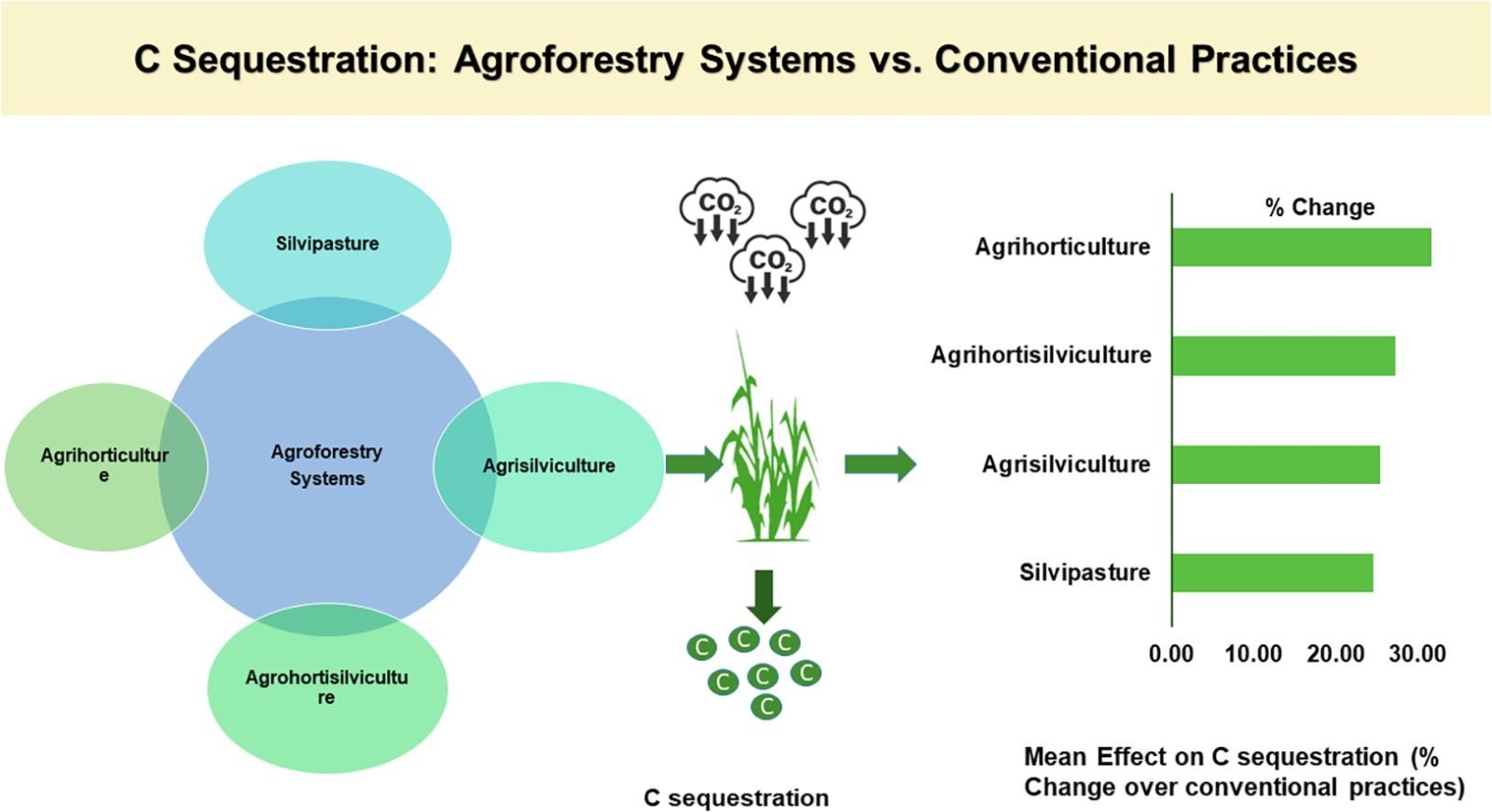August, 2023 | Ecosystem Services | Source |
Introduction: Agricultural intensification in India threatens ecosystem sustainability, with agroforestry identified as a key strategy to mitigate these impacts through carbon (C) sequestration. This meta-analysis, conducted by researchers from ICAR - National Institute of Agricultural Economics and Policy Research (NIAP), quantifies soil C sequestration potential in 4 Agroforestry (AF) systems—agrisilviculture, silvipasture, agrihortisilviculture, and agrihorticulture—in the Indian agricultural landscape. Synthesizing data from 46 peer-reviewed studies, it evaluates the impacts of land use change, soil depth, age, and climate, comprehends the drivers of C sequestration, and assesses economic feasibility.
Key findings:
- Soil C sequestration potential: AF systems increased soil C sequestration by an average of 25.34% compared to non-agroforestry systems. Among the 4 types studied, agrihorticulture showed the highest mean soil C stock at 38.11 Mg C haÔü╗¹, representing a 31.64% increase compared to conventional systems.
- Drivers of soil C sequestration and impacts of land-use change, age, soil depth and climate: The major factors influencing soil C sequestration in Indian AF systems were identified as the previous land use, the specific type of AF system, its age, and rainfall.
Conversion from grassland to AF systems resulted in the highest C gain (+36.94%). In contrast, changing from forest to AF led to a decrease in soil C sequestration (–23.42%). This highlights the need for careful evaluation and continuous monitoring to balance the trade-offs between forest conversion to agroforestry and the competing goals of conservation and livelihoods.
Analysis by age showed that AF systems aged 10–20 years exhibited the highest sequestration potential (+39.51%). Soil depth analysis indicated that the upper soil layers (up to 30 cm) saw significant increases in soil C stocks (ranging from +30.62% to +32.74%). AF in semi-arid subtropical regions also showed higher sequestration potential.
- Economic assessment: All evaluated AF systems were found to be technically feasible and economically profitable. The net economic return from carbon sequestration, after accounting for stabilization costs, ranged from US $66.25 to $160.63 per hectare per year.
The study suggests that promoting AF through stronger policy incentives, improved certification standards for products, and better extension services is crucial for enhancing ecosystem services and supporting India’s targets for net-zero emissions and increased C stock.
Graphical Abstract






